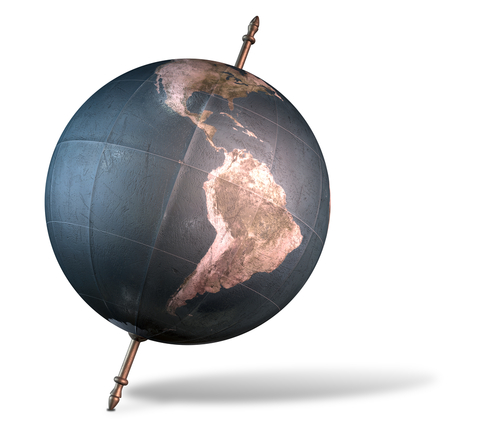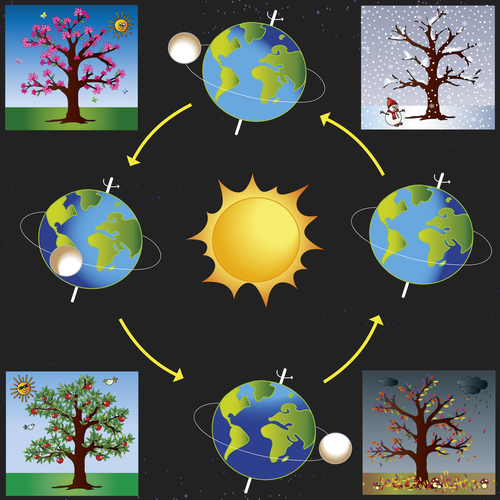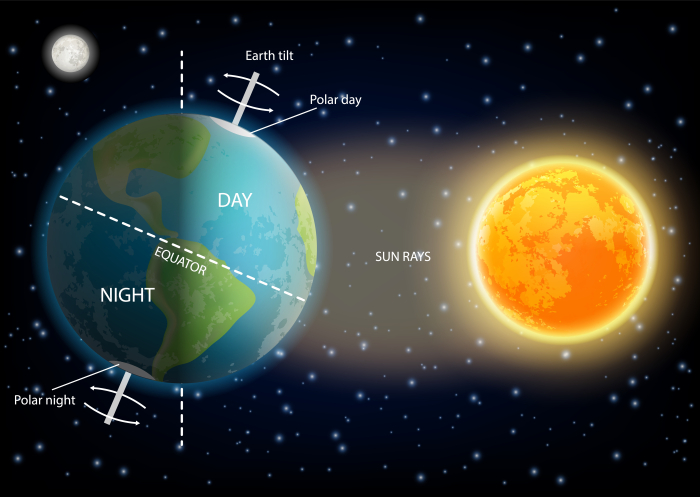However long you've lived on Earth, it has spun on its axis and it's orbited the Sun throughout your life!

A day on Earth is 24 hours because it takes it that long to make one complete spin.
As Earth spins, it's also tilted on its axis (we'll come to that later).

The spin of the Earth makes it look as though the Sun is rising in the east in the morning and setting in the west in the evening.
The half of the Earth that faces the Sun has day and the other half night. This alternates as the Earth spins - have you experienced that in different countries too?

It takes the Earth one year (365.25 days) to orbit the Sun - that's the time taken to make one complete journey around the Sun.
Of course, our calendar year is 365 days long, so every four years we add an extra day to make up the time. This is called a leap year (when February has 29 days).
Take a bit of time to look over this diagram of Earth's orbit over the year. Can you match up the pictures of spring, summer, autumn and winter with where Earth is on its orbit?

Note how important that tilt of the Earth is in causing our seasons!
On the left, the Northern Hemisphere is tilted towards the Sun - that means that the UK spends more of each daily spin in the Sun's light and heat, so that's our summer. As you know, our days are longer in summer and the Sun is higher in the sky - can you see why?
Here it is in more detail:

On the right-hand side of the seasons diagram (with the four Earths), the Northern Hemisphere is now tilted away from the Sun: shorter days, less sunshine per day, so the temperature is colder - our winter. Of course, the Southern Hemisphere experiences the exact opposite season to whatever we're experiencing in the UK.
So, that's a little reminder of why we have day and night and how Earth's orbit around the Sun, and its 24o tilt, cause our seasons.
Are you ready to tackle some questions now?
You can look back at this page at any point by clicking on the red help button on the screen.









